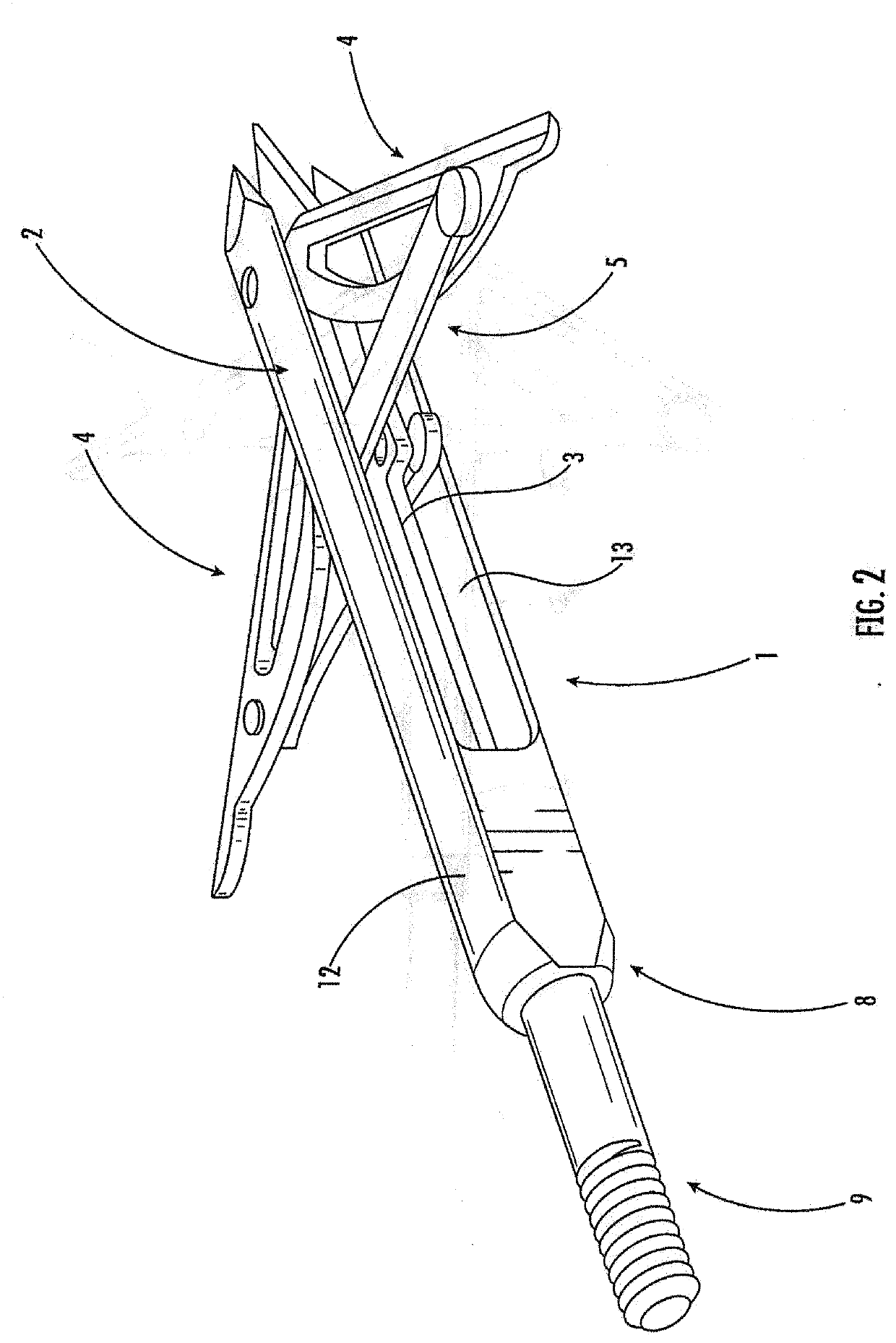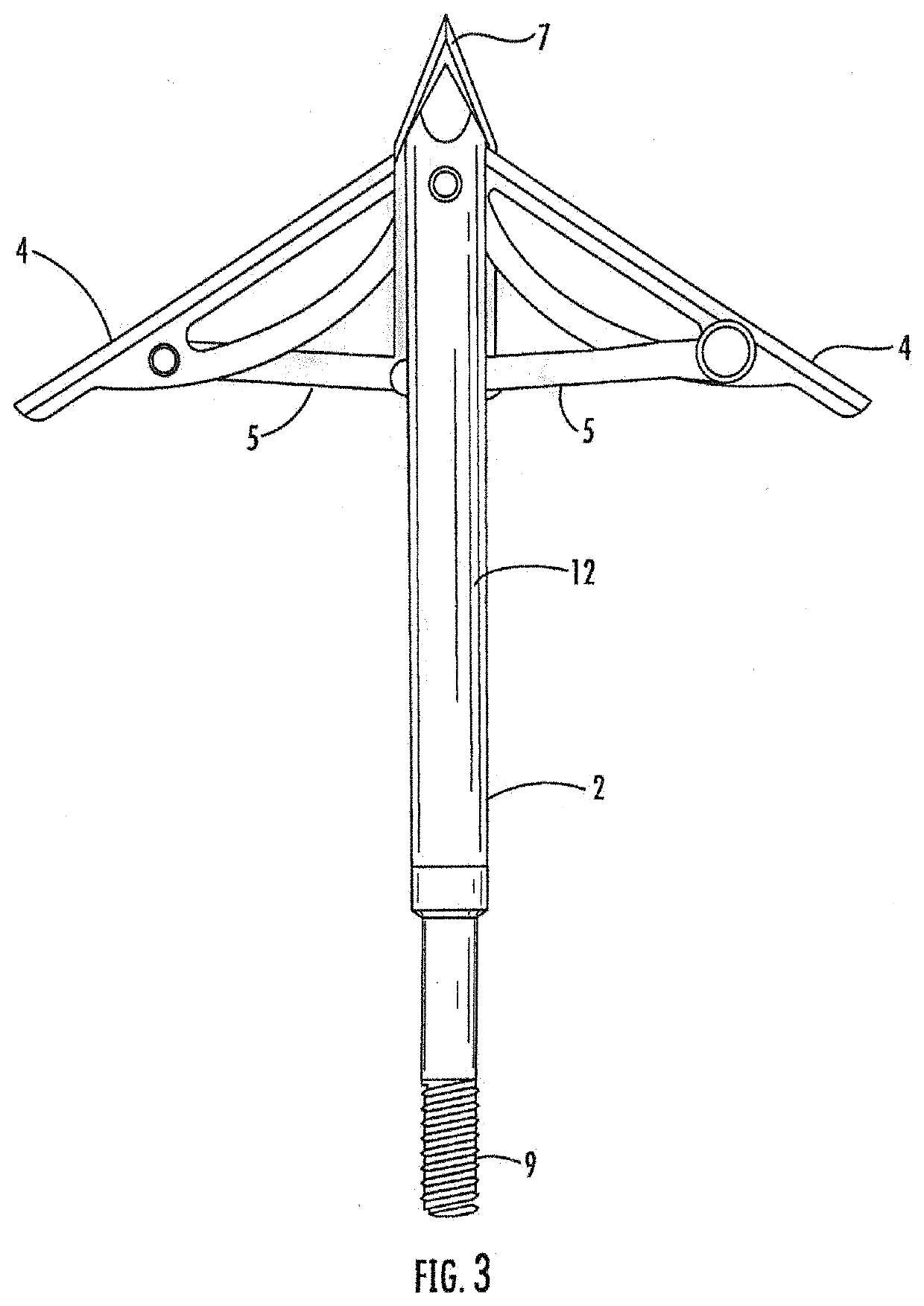Rear Deploying Broadhead
a rear-deploying, broadhead technology, applied in the field of archery, can solve the problems of not being identical in weight and size to each other, not being able to shoot from a bow with a light weight, and being expensive, so as to reduce the impact value, reduce the molecular weight, and reduce the tensile strength
- Summary
- Abstract
- Description
- Claims
- Application Information
AI Technical Summary
Benefits of technology
Problems solved by technology
Method used
Image
Examples
Embodiment Construction
[0051]Various embodiments of the invention are described more fully hereinafter with reference to the accompanying drawings, in which some, but not all embodiments of the invention are shown in the figures. Indeed, these inventions may be embodied in many different forms and should not be construed as limited to the embodiments set forth herein; rather, these embodiments are provided so that this disclosure will satisfy applicable legal requirements.
[0052]A first embodiment of the present invention is shown in detail in FIGS. 1-4. FIG. 1 shows an exploded plan view of an embodiment of the broadhead of the present invention in a deployed position. In this nonlimiting example, the body 1 comprises an outer housing 2. An inner spine 3 is arranged to be position inside the outer housing 2. At least two blades 4 are positioned to be pivotally attached to the inner spine 3. The inner spine has a first end 5 which acts a plunger end. The inner spine has a second end 6 which is pointed. The...
PUM
 Login to View More
Login to View More Abstract
Description
Claims
Application Information
 Login to View More
Login to View More - R&D
- Intellectual Property
- Life Sciences
- Materials
- Tech Scout
- Unparalleled Data Quality
- Higher Quality Content
- 60% Fewer Hallucinations
Browse by: Latest US Patents, China's latest patents, Technical Efficacy Thesaurus, Application Domain, Technology Topic, Popular Technical Reports.
© 2025 PatSnap. All rights reserved.Legal|Privacy policy|Modern Slavery Act Transparency Statement|Sitemap|About US| Contact US: help@patsnap.com



